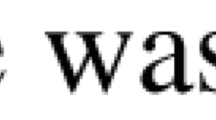Abstract
Criticisms have been aired before (see Bealer 1982, Schiffer 2003 for example) about the fear (which Arthur Prior shared) of certain Platonic abstract objects, propositions. That criticism extends to the widespread preference (which Prior initiated) for an operator analysis of expressions like ‘It is true, known, obligatory that p’ as opposed to the predicative analysis in their equivalents ‘That p is true, known, obligatory’. The criticism in the present work also concerns Prior’s attitude to Platonic entities of a certain kind: not propositions, i.e., the referents of ‘that’-clauses, but individuals, i.e., the referents of Russell’s ‘logically proper names’. Prior had a close knowledge of theories of individuals, including that of Russell. However, when Prior formulated his tense logic Q he presumed a non-Russellian, pre-suppositional account of individuals, such that they might exist at one time but not at another, and when they did not exist no statement could be made about them. This paper examines the correctness of such a pre-suppositional account of individuals, showing there are features of natural language it cannot account for. It is shown that the required features can be formalised in Hilbert’s epsilon calculus, and that using that calculus substantiates a Russellian understanding of ‘logically proper names’.
Similar content being viewed by others
References
Bealer, G. (1982). Quality and concept. Oxford: Clarendon.
Evans, G. (1977). Pronouns, quantifiers, and relative clauses—1. Canadian Journal of Philosophy, 7, 453–467.
Frege, G. (1956). The thought: A logical enquiry. Mind, 65, 289–311.
Groenendijk, J., & Stokhof, M. (1991). Dynamic predicate logic. Linguistics and Philosophy, 14(1), 39–100.
Kamp, H. (1995). Discourse representation theory. In J. Verschueren, J.-O. Östman, & J. Blommaert (Eds.), Handbook of pragmatics (pp. 253–257). Amsterdam: Benjamins.
Leisenring, A. C. (1969). Mathematical logic and Hilbert’s epsilon symbol. London: Macdonald.
Lewis, D. (1973). Counterfactuals. Oxford: Blackwell.
Lewis, D. (1986). On the plurality of worlds. Oxford: Blackwell.
Meyer Viol, W. P. M. (1995). Instantial logic. Amsterdam: ILLC.
Prior, A. N. (1957). Time and modality. Oxford: O.U.P.
Prior, A. N. (1971). In P. T. Geach & A. J. P. Kenny (Eds.), Objects of thought. Oxford: O.U.P.
Schiffer, S. (2003). The things we mean. Oxford: Clarendon.
Slater, B. H. (1986). E-type pronouns and \(\upvarepsilon \)-terms. Canadian Journal of Philosophy, 16, 27–38.
Slater, B. H. (1987). Hilbertian tense logic. Philosophia, 17(4), 477–488.
Slater, B. H. (2007). Completing Russell’s logic. In N. Griffin, D. Jacquette, & K. Blackwell (Eds.), After ‘On Denoting’ (Vol. 27, pp. 78–92). Hamilton: The Bertrand Russell Research Centre.
Slater, B. H. (2009). Hilbert’s epsilon calculus and its successors. In D. Gabbay & J. Woods (Eds.), Handbook of the history of logic (Vol. 5, pp. 385–448). Burlington, MA: Elsevier Science.
Strawson, P. F. (1951). On referring. Mind, 59, 320–344.
Williamson, T. (2002). Necessary existents. In A. O’Hear (Ed.), Logic, thought and language, C (pp. 233–251). Cambridge: U. P.
Author information
Authors and Affiliations
Corresponding author
Rights and permissions
About this article
Cite this article
Slater, H. Prior’s individuals. Synthese 193, 3497–3506 (2016). https://doi.org/10.1007/s11229-015-0881-3
Received:
Accepted:
Published:
Issue Date:
DOI: https://doi.org/10.1007/s11229-015-0881-3



